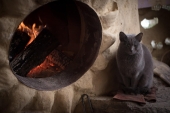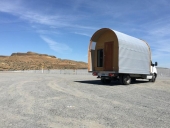The "Lo'i" Wetland
Irrigated terraces specifically designed for the cultivation of Taro, or in Hawaii, "Kalo." They utilize flowing fresh water from streams or springs, and are deeply tied to Hawaiian culture and traditions, serving both as a source of food and sacred spaces. Lo'i mimic natural wetland dynamics while being managed by mahi'ai (land stewards) for maximum productivity.
Water Depth: typically around 4-12 inches
Frequency: semi-permanent with reliance on continuous flowing wai (water)for maintaining proper oxygen levels and prevention of stagnation.
Plants: Primarily Kalo (Colocasia esculenta). Secondarily can include floating azolla water fern, watercress, warabi fern along the edges, or other plants used for mulch.
Ecosystem Functions: Water filtration of sediments and excess nutrients. Biodiversity in the form of aquatic species such as small fish or native "Opae" shrimp. Soil stabilization provided by the living roots of Kalo and other plants, and the slowing and spreading of water. Perpetuation of cultural practice and knowlegde. Proper Lo'i management considers the health of both upstream and downstream systems. Management of the watershed networks is critical.
(Painting of Haloa by Maggie T. Sutrov)











